Auto
New Huawei Smart Car Cockpit announced with HarmonyOS 4.0
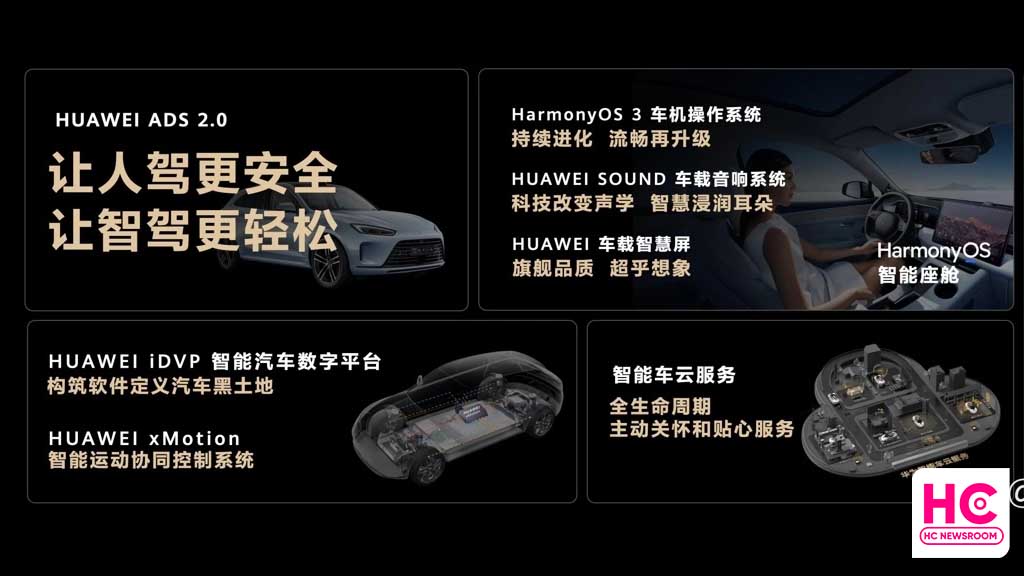
On April 16, at Huawei Smart Car Solutions Press Conference, Huawei announced its newest smart car cockpit system featuring HarmonyOS 4.0 capabilities. However, its launch set for later this year.
The 2023 version of the Huawei Smart Car Cockpit includes a new HarmonyOS version, the next gen HUAWEI SOUND technologies, and Huawei’s digital solutions.
For those who don’t know, a smart cockpit brings personalized interaction experience to users by integrating “one core, multiple screens, multiple systems”, voice recognition, gesture control, LCD instrumentation, HUD, DMS, ADAS integration, and more.
Next Gen Huawei Smart Car Cockpit
Huawei announced that the new HarmonyOS 4.0 powered Huawei smart car cockpit system will launch this fall first with the AITO M9 Smart SUV. As we discussed in a separate article, the cockpit will focus on a multi-user approach.
In detail, it will use a multi-person, multi-device, multi-screen, and multi-audio zones approach.
The main highlights of the system are:
- Six-tone zone sound source positioning
- Multi-person, multi-screen, and multi-sound zone control
- In-cabin eye tracking and eye status recognition
- Multi-screen multi-channel dual-way control
- Multi-screen cross-device projection
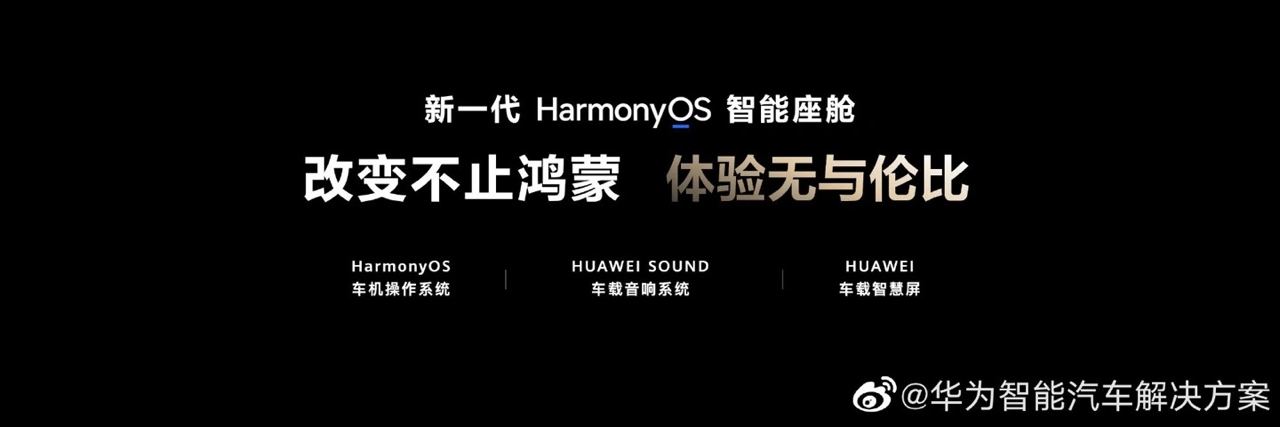
Features:
The smart car cockpit supports a new experience for up to five screens simultaneously ranging from front to passenger seats. This allows entertainment and peace of driving together for all users.
This new car tech uses the next generation of HUAWEI SOUND in-vehicle sound. Huawei says this will not only enhance the sound experience but also bring an immersive sound field above 7.1.
The infotainment screen will also get brand new upgrades with touch response, smart connection with more platforms, and one-touch speed data transmission.
Smart Cockpit Solutions:
Huawei XHUD:
This is an AR-HUD augmented reality head-up display, which has the industry’s largest mass-produced frame: 70 inches at 7.5 meters and 96 inches at 10 meters. It also has the highest mass-produced resolution in the industry at 1920×730 pixels.
The screen has the first 2K car-grade optical imaging module, XHUD adopts car-grade LCoS, polarization components, a short-focus lens, and a three-color LED light source.
Looking at the features, the HUAWEI xHUD AR-HUD augmented reality head-up display can provide lane-level AR navigation, reversing images, huge screen viewing, digital wizards, and more.
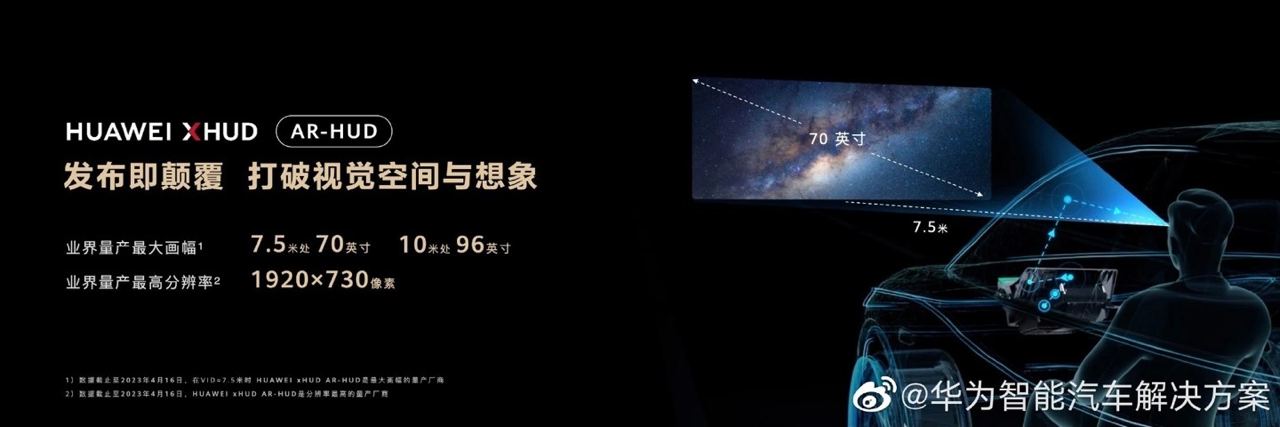
Huawei XPIXEL:
The Chinese tech maker also launched a new HUAWEI xPixel smart car lighting solution. XPIXEL can provide mega-pixel refined lighting and intelligent lighting expression. The lighting system also has a high-precision ADB (adaptive high beam).
![]()
Huawei XSCENE:
HUAWEI xScene light field screen made its debut with improvements in the limitations of the physical space in the car. It brings a 3-meter-distance, 40-inch viewing experience, effectively reducing visual fatigue. xSCENE also promises to effectively relieve motion sickness.
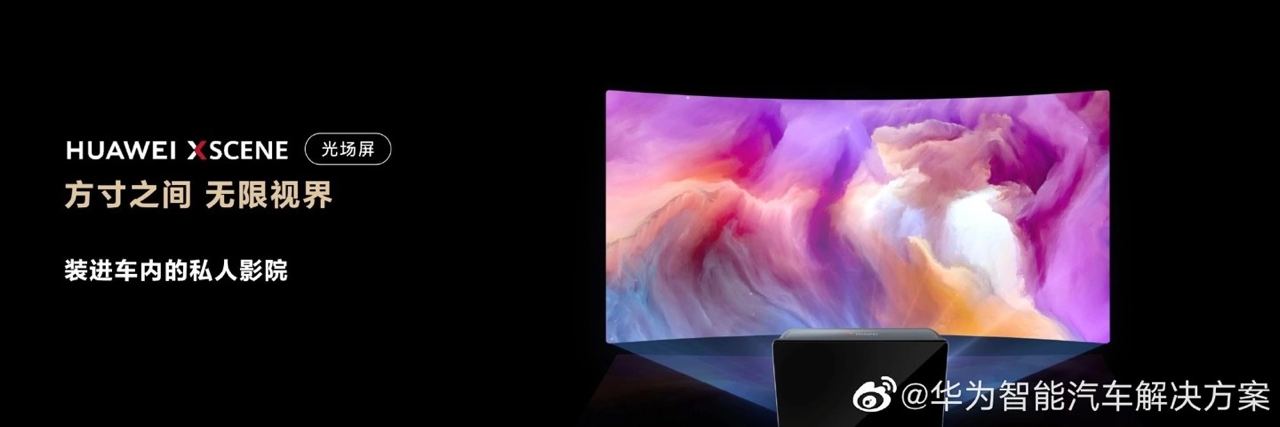
Huawei iDVP:
This smart car digital base has a software-defined car black land and brings new possibilities for smart cars. Its highlights are:
- Highlights include
- Highly multiplexed
- consistent experience
- fast iteration
- Often new
- practice accumulation
- Safe and reliable
- Multi-domain collaboration
- Ultimate driving control
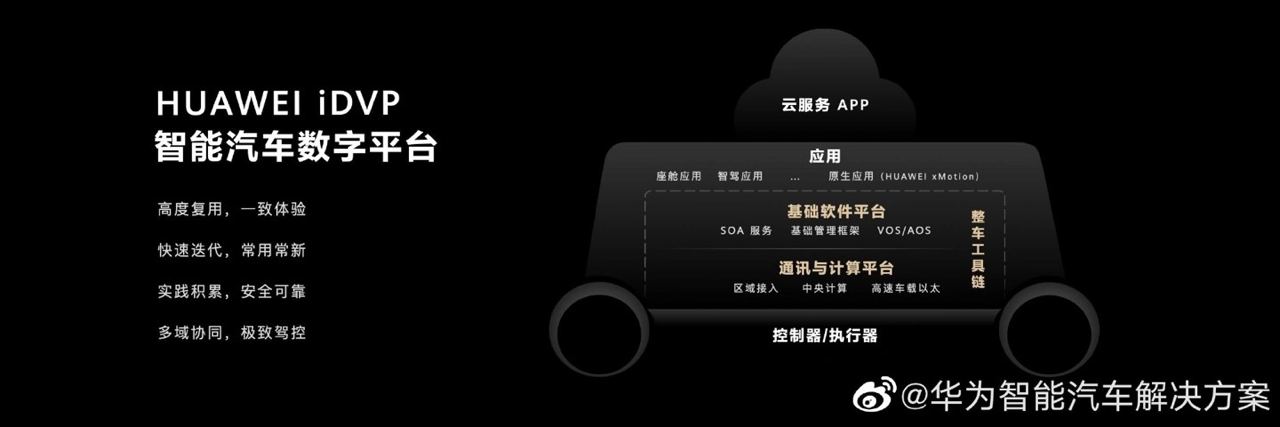
Huawei xMotion:
This smart motion collaborative control system has multi-dimensional driving coordination, braking, steering, and suspension system. xMotion can provide 6 degrees of freedom and full stance control of the vehicle body.
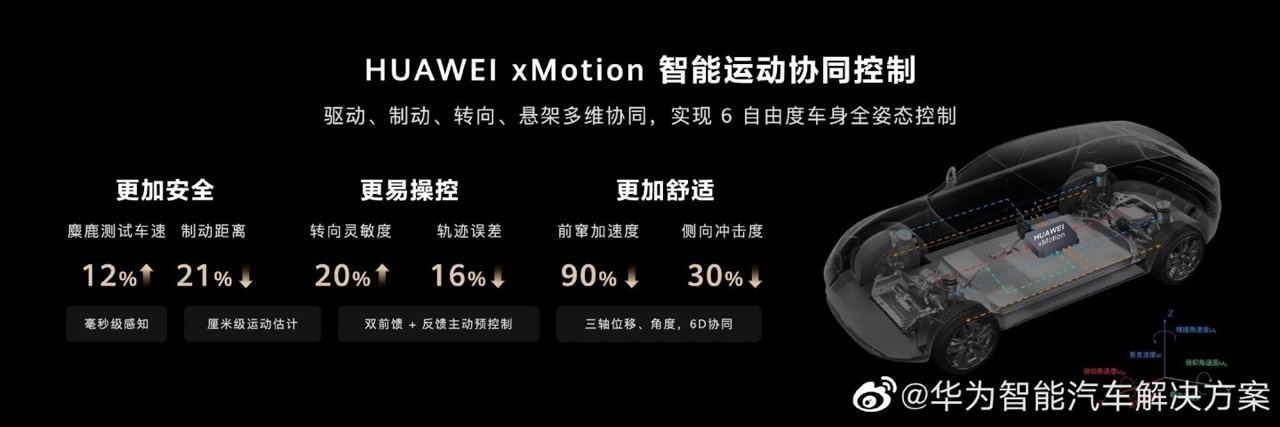
It can cope with more extreme scenarios and bring a comfortable car control experience. Through Huawei’s smart car cloud service, you will have a personal butler for your car. From remote car backup, sensorless digital keys, and battery protection, to vehicle-level OTA, all aspects will bring users a more convenient, comfortable, and safe travel experience.






